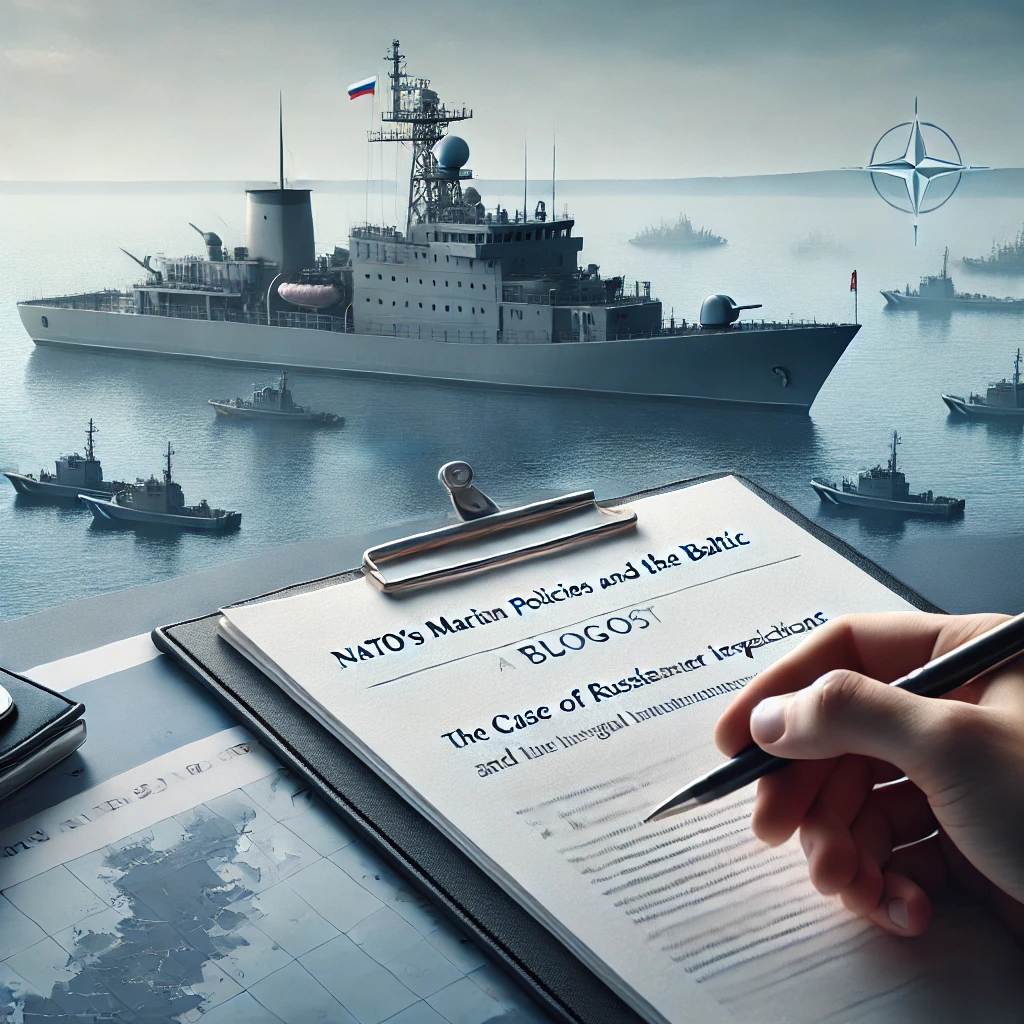
Question:
Hi. Could you comment on the situation with possible inspections of Russian tankers in the Baltic by a grouping of NATO ships being created?
On December 26, Finnish special forces boarded the tanker Eagle S in the Gulf of Finland. According to one source it was carrying gasoline to Turkey from the port of Ust-Luga, according to others – oil to Egypt. No anchors were visible in the fairleads. At least one was torn off. For this reason, the Finnish police believe that the tanker broke the Estlink 2 electric cable connecting Finland and Estonia at the bottom of the sea. The ship is also suspected of cutting an important EU fiber optic line in the same area. Over the past year, the BCS East West Interlink, EE-S1 and C-Lion 1 fiber optic cables, as well as a gas pipeline between Finland and Estonia, have been severed under as yet unspecified circumstances.
This is the end of the factual circumstances. Let’s look at the legal part of the matter. I turned to the flagship navigator of the Black Sea Fleet – according to his official duties he is a qualified specialist in the law of the sea. Here is his conclusion.
The tanker Eagle S is registered and sailing under the flag of the Cook Islands. It is owned by Caravella LLC FZ of the UAE. Technical management is contracted by MarineTraffic, an Indian company. The captain is a citizen of Georgia. The crew consists of Georgian and Indian citizens.
The tanker did not enter Finnish territorial waters. Finnish special forces boarded the ship from a helicopter in neutral waters and forced the captain to cross into Finnish waters, where he was arrested. Maritime law is elaborate for such cases and does not provide for such a seizure.
The explanation that the Finnish controlling authorities decided to check the technical condition of the ship is ridiculous. The whole world knows that so-called “flags of convenience” exist to save money on repairs and insurance – tens of thousands of old ships sail under them. The Finns recognized the condition of the ship’s mechanisms and the ship itself as unsatisfactory. But this circumstance does not give the Finnish police any rights to board the Eagle S on foreign territory and to inspect it. Otherwise, any country, based on this precedent, will be able to seize any foreign vessels in the future.
Technical control is the responsibility of the country of registration, insurer and owner. They have appropriate certified bodies for that. But cable damage is not such a rare phenomenon in the seas. According to the international practice, communication breakages are compensated by insurance companies in accordance with the established procedure. This circumstance also does not give the right to board a ship and forcibly transfer to its own waters.
Now there is a unique situation: all shipping countries, operators and ship owners are waiting for the outcome – will a lawsuit be filed against Finland’s actions? Otherwise, the right of the strong will start to be established at sea instead of the law of the sea. It is clear that nobody will defend the old tanker from Abu Dhabi. But the owners may intercede for the safety of the cargo.









Looks like the Baltic Sea just got its own reality show called Law & Order: Tanker Edition 🌊🚢 Who knew maritime law could be so dramatic with helicopters, cable cuttings, and international politics all stirred together? 🤯 If Finland starts boarding ships like they’re picking up pizza, I’m not sure the seas will ever be calm again. Someone get this old tanker a superhero cape or at least a lawyer with a bigger boat ⚖️🦸♂️
This situation highlights the delicate balance between enforcing maritime law and respecting sovereignty, especially when incidents happen in neutral waters. The Finnish action raises important questions about precedent and the potential for misuse of power at sea. With complex ownership structures and flags of convenience, international cooperation and clear legal frameworks are more crucial than ever to prevent escalation and maintain order. 🌊⚖️
This situation highlights the complex balance between maritime law and national security interests. Boarding a ship outside territorial waters raises serious legal questions and could set a concerning precedent. It will be interesting to see how the international community responds and whether this incident leads to clearer regulations or disputes over jurisdiction at sea.
Sounds like the Baltic Sea just turned into the wild west of the ocean—where tanks meet tankers and everyone’s trying to play pirate without the cool hats 🏴☠️. Next thing you know, seagulls will start demanding passports!
This situation highlights the complex interplay between maritime law, national security, and international relations. 🚢 The Finnish boarding of the Eagle S in international waters raises serious questions about the limits of enforcement and respect for established legal norms. It’s concerning that an action justified by security concerns could set a precedent that undermines the principle of freedom of navigation and the protection of vessels under their flag states. 🌍 The involvement of several countries in ownership and crew further complicates this, showing how interconnected modern shipping is. The potential for escalating disputes over such incidents makes clear how fragile maritime order can be when national interests clash. ⚖️ It will be crucial to see how international courts or arbitration handle this, as their decisions might define future maritime conduct in contested waters.
This situation really highlights how fragile the current balance of maritime law can be when powerful nations decide to act outside established rules. The boarding of the Eagle S without entering territorial waters sets a worrying precedent that could undermine international norms and provoke tensions at sea. It’s concerning to think that legal protections meant to prevent arbitrary seizures might be ignored simply because of political motivations. The complexity of ownership, registration, and the multinational crew adds another layer to this issue, making it clear that these cases are never as straightforward as they seem at first glance. I hope this incident prompts countries to reaffirm the importance of respecting maritime law and finding peaceful solutions rather than escalating conflict through unilateral actions.
This situation really highlights the delicate balance between maritime law and geopolitical interests. The boarding of a ship in international waters without clear legal grounds sets a concerning precedent that could disrupt established norms and escalate tensions in the region. It’s important that international law is respected to prevent the seas from becoming a lawless zone where might makes right.🌊⚖️
If this keeps up, soon the Baltic Sea will need its own reality show called Sea Law or No Law 🤷♂️🚢 Can’t wait to see if Finland gets a legal smackdown or if the Eagle S just becomes a legend of the high seas drama!
Well, looks like international waters are turning into an episode of a spy thriller mixed with a legal drama 📺⚖️! Finnish special forces boarding a ship that didn’t even enter their territorial waters? Bold move or recipe for chaos? Sounds like the sea might become the new Wild West where might makes right, and flags of convenience are the perfect disguise 🤔🚢. At this rate, every rusty tanker could end up on a continental courtroom stage—popcorn ready! 🍿🌊
As a guy, I worry this sets a dangerous maritime precedent ⚖️⛴️🌊🚨
This forced boarding action really sets a concerning precedent for maritime jurisdiction and the established laws of the sea going forward 😟
The boarding of the Eagle S in international waters raises critical concerns about adherence to established maritime law and the potential erosion of legal norms governing freedom of navigation. Allowing such actions without clear legal basis risks setting a dangerous precedent where might supersedes rights, undermining international stability. It is essential that any disputes remain within the framework of recognized legal processes to maintain order and respect for sovereign jurisdictions at sea.
If seas become a real-life game of Battleship with surprise boardings and underwater cable sabotage, I’m just waiting for NATO to call in the coast guard with popcorn and make this maritime soap opera a prime-time hit 🍿
So basically, Finland just tested if international law floats or sinks by rappelling onto a tanker in neutral waters 🚁⚖️ Seems like the sea’s about to host its own courtroom drama, starring flags of convenience and tangled cables—who knew maritime disputes could get this tangled and theatrical? Let’s hope the lawsuit doesn’t turn into a pirate soap opera where might makes right because that old tanker might just be the canary in the deep-sea coal mine. 🛳️